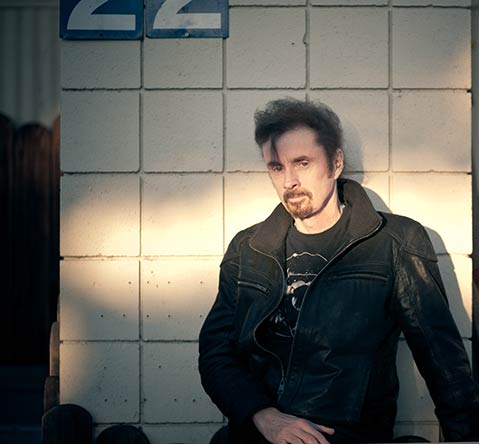T.C. Boyle Talks ‘The Terranauts’
Author Explores Idea of Human Coexistence in Confined Space

Longtime Santa Barbara resident T.C. Boyle is the winner of a number of literary awards — such as the PEN/Faulkner Award and France’s Prix Médicis étranger — and is the author of 26 books of fiction, including The Road to Wellville, The Tortilla Curtain, and The Harder They Come. I recently spoke with him about his new novel, The Terranauts, which was published in October.
The Terranauts is inspired by a real place in Arizona, Biosphere 2, and the several unsuccessful attempts to use it as an experiment of a closed ecological system. What drew you to that setting and subject matter? When the Biosphere 2 project was first announced in the early 1990s, I was mightily intrigued by it. It received enormous press coverage — the Biospherians (or Terranauts, as I call them) were presented to the public as heroes in much the same way that the astronauts were. What drew me in was the premise: absolute material closure, nothing in, nothing out. These eight men and women were expected to survive in an artificial ecosystem of 3.15 acres that incorporated some 3,800 species of plants and animals for a full two years, the first closure of a projected 50 consecutive closures. The question: Could we create a self-sustaining biosphere (like the one we inhabit, Biosphere 1), with an eye to creating an off-Earth colony?
The novel begins in 1994. That was a tumultuous time in the outside world —Rwanda, the war in Bosnia. Why did you choose that specific moment in history to enclose your characters in a prototype for an off-Earth colony?
The period was dictated by the history of the actual events surrounding Biosphere 2. My novel projects a full second closure, as the original experiment broke down over a dispute between the creator of the project and its financier six months into the second closure. I intentionally isolated my crew from outside events so that they (and I) could focus on survival and interpersonal relationships. Which was great, good fun. Sexy, too. Four men, four women, sealed inside a glass and space-frame bubble for two years: What are they going to do in there? And, of course, the very experiment itself lends itself to the environmental themes I’ve explored throughout my previous 25 books.
Indeed, an enclosed space like the E2 biosphere seems to have clear parallels with the fictional space of this — or any novel — with Mission Control and “G.C.,” the project’s mastermind, in the position of the author. To what extent do you see yourself as “God the Creator”?
Good point. Of course, I’m playing with the metafictional aspects of all this. The novelist is god of his/her creation and can make the characters dance to his tune. As I’ve said previously, only half-jokingly, I feel adrift in this world we inhabit that is ruled by accident and seems to have no purpose but to reproduce life, while in a novel I can exert control over my characters — and, by god, make them suffer!
Despite all the conflicts and problems they face, the novel ends on what I interpret as a relatively optimistic note, albeit an ironic one. What do you think?
Can people coexist harmoniously, or at least nonviolently, when they’re confined in a small space with basically no exit? Not to mention the larger point: Can people coexist harmoniously, or at least nonviolently, when they’re out in the world itself? Look around you, and the answer should be apparent. What I am doing here is creating a microcosm, which serves to deepen and exacerbate the psychological dimension in which we all exist when we enter into relations with others. With 7.3 billion of us on the planet, what we crave is space and solitude, at least for some of the time, but what we get is competition for those very things with everybody else. Is closure a viable alternative? Is a space colony? Is it exclusive? Elitist? What happens to the rest of us when the environment collapses?
As Elizabeth Kolbert pointed out when NASA inaugurated its most recent closure experiment last year, we had better look to preserving the biosphere we inhabit rather than thinking of creating one anew (it ain’t that easy, folks) and find breathing room where we can. I am thankful every day for the wild places of this Earth and for the mountains and beaches that give us very, very lucky Santa Barbarans a way of communing with nature and a respite from the crush of humanity. And that is an assuredly optimistic note, delivered here sans irony.



